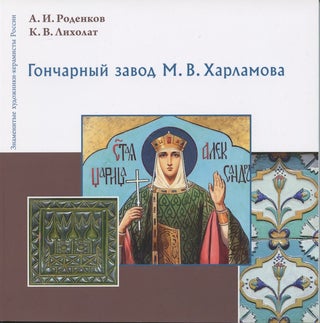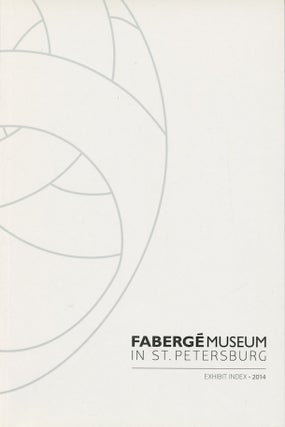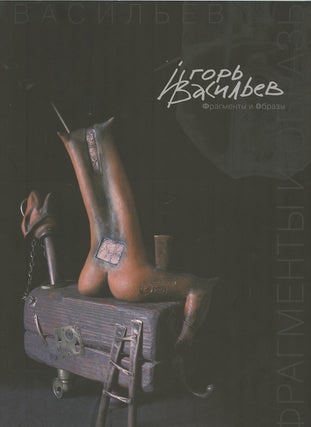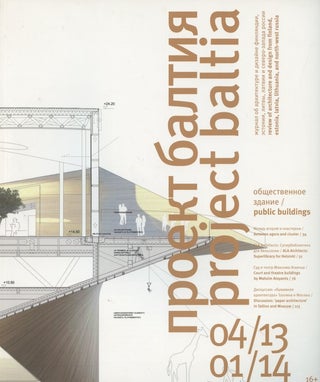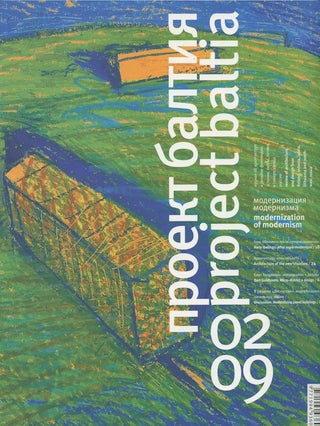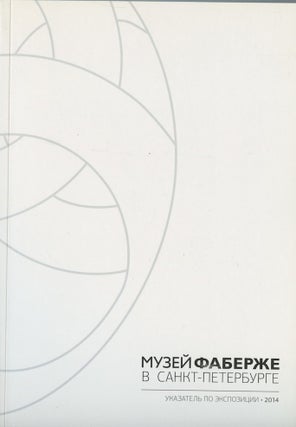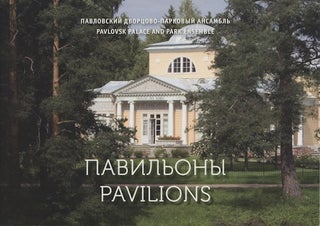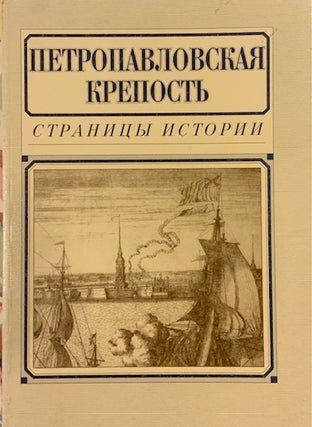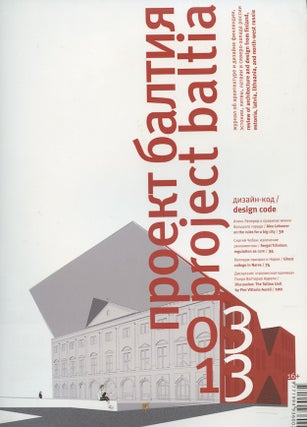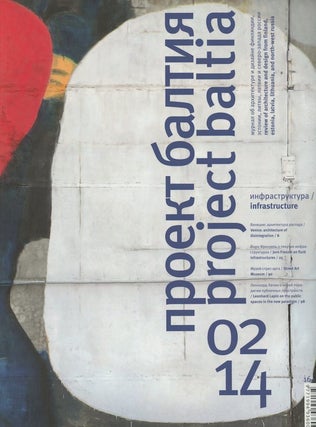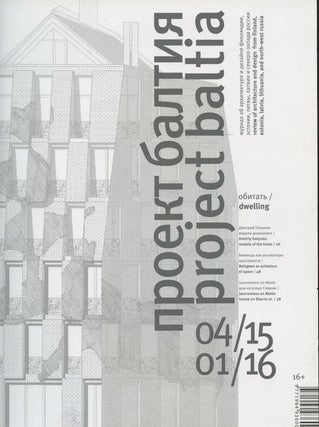Applied Arts

Bronze Horseman imports books on applied and decorative arts, most of which publish research and visual documentation stemming from exhibitions and collections of Russian museums. Russian collections have many works of decorative art originating outside Russia. For example, Baron Alexander von Stieglitz spent one million rubles in the 1870s collecting works of decorative art in Western Europe for his museum-school, so that students in a mechanized age could learn high aesthetic standards from handmade crafts of the past. His collection now forms the core of the Hermitage Museum’s decorative arts department.
Architects often designed the interiors of palaces, specifying in drawings the forms of furniture, candelabra, chandeliers, and vases, which can now be seen in their original interiors in the publications of palace-museums. The palace-museums outside St. Petersburg (Peterhof, Tsarskoe Selo, Pavlovsk, Gatchina, and Oranienbaum), formerly residences of the imperial family, have collections of decorative art built over the eighteenth and nineteenth centuries by emperors, empresses, and courtiers. These museums have examples of the best workmanship of Russian and Western European artists, which are published in both collection catalogues and thematic exhibition catalogues. Quite a different branch of applied arts —ecclesiastical metalwork and textiles — is published, for example, in the catalogues of the Museum of the History of Religion, also in St. Petersburg.
Arkhitekturnaia grafika Geral'da Bosse (1812-1894). K 200-letiiu so dnia rozhdeniia (Architectural drawings of Geral'd Bosse (1812-1894): [Published on the occasion lf] 20th anniversary of his birth)
St. Petersburg: Palatsio, 2012. Pb. This catalogue of an exhibition at the Academy of Fine Arts in St. Petersburg displays the highly polished drawings of an architect who shaped the milieu of mid nineteenth century St. Petersburg through a talented use of eclectic elements. 47 p., 23 cm, approx. 90..... More
Fabergé Museum in St. Petersburg: Exhibit Index / Muzei Faberzhe v Sankt-Peterburge: ukazatel’ po ekspozitsii
St. Petersburg: Muzei Faberzhe, 2014. Pb. In addition to the jewelry, metalwork, and enamels by Fabergé and jewelers of other studios and workshop in Russia (e.g., Ovchinnikov), the Fabergé Museum in St. Petersburg has in its collections religious and secular paintings, wood carvings, and porcelain. This guidebook catalogues the collection..... More
Igor' Vasil'ev: fragmenty i obrazy (Igor' Vasil'ev: fragments and images)
St. Petersburg: Ars, 2013. Pb. A contemporary artist's imaginings in ceramic, metal and wood. 93 p., approx. 100 color illus., Rus. More
Imperatorskii khram Gatchinskogo dvortsa (Church of the imperial family at Gatchina Palace)
St. Petersburg: Gatchina, N.d. Pb. The palace ensemble at Gatchina is the least well-known of the suburban palaces outside St. Petersburg, partly because it was severely damaged during World War II and partly because it was the last of the palaces to be given museum status. In this Gatchina museum..... More
Keramika mira, 1 & 2 / Architectural Ceramics of the World, 1 & 2
St. Petersburg: Kolo, 2019. Sewn pb. More
M-Proekt baltiia: zhurnal ob arkhitkture i dizaine Finliandii, Estonii, Litvy, Latvii i severo-zapada Rossii, 2013 (04) - 2014 (01) / Project Baltia: Review of Architecture and Design from Finland, Estonia, Latvia, Lithuania, and Northwest Russia 2013 (04) - 2014 (01)
St. Petersburg: Baltikum, 2013. pb. 159 p., 29 cm, approx. 400 color illus., Rus. and ENGLISH. ISSN: 1994-9367. More
M-Proekt baltiia: zhurnal ob arkhitkture i dizaine Finliandii, Estonii, Litvy, Latvii i severo-zapada Rossii, 2009 (02) / Project Baltia: Review of Architecture and Design from Finland, Estonia, Latvia, Lithuania, and Northwest Russia, 2009 (02)
St. Petersburg: Baltikum, 2007. pb. 125 p., 29 cm, approx. 400 color illus., Rus. and ENGLISH. ISSN: 1994-9367. More
M-Proekt baltiia: zhurnal ob arkhitkture i dizaine Finliandii, Estonii, Litvy, Latvii i severo-zapada Rossii, 2012 (03) / Project Baltia: Review of Architecture and Design from Finland, Estonia, Latvia, Lithuania, and Northwest Russia 2012 (03)
St. Petersburg: Baltikum, 2013. pb. 135 p., 29 cm, approx. 400 color illus., Rus. and ENGLISH. ISSN: 1994-9367. More
M-Proekt baltiia: zhurnal ob arkhitkture i dizaine Finliandii, Estonii, Litvy, Latvii i severo-zapada Rossii, 2013 (03) / Project Baltia: Review of Architecture and Design from Finland, Estonia, Latvia, Lithuania, and Northwest Russia 2013 (03)
St. Petersburg: Baltikum, 2013. pb. 139 p., ISSN: 1994-9367. More
Mosty, plotiny, kaskady / Bridges, Dams, Cascades [of Pavlovsk palace and park ensemble]; , ,
St. Petersburg: Pavlovsk, 2016. Saddle-stitched. The park around Pavlovsk Palace has almost as architectural and design masterpieces on a par with those of the palace itself, which is not surprising as the same great Western European and Russian architects and designers worked on both. In this compact but informative survey..... More
Muzei Faberzhe v Sankt-Peterburge: ukazatel’ po ekspozitsii / Fabergé Museum in St. Petersburg: Exhibit Index
St. Petersburg: Muzei Faberzhe, 2014. Pb. In addition to the jewelry, metalwork, and enamels by Fabergé and jewelers of other studios and workshop in Russia (e.g., Ovchinnikov), the Fabergé Museum in St. Petersburg has in its collections religious and secular paintings, wood carvings, and porcelain. This guidebook catalogues the collection..... More
Muzeul National de Istorie a Moldovei / National Museum of History of Moldova / Natsional'nyi muzei istorii Moldovy
Chisinau: Casa Editorial / Pechatnyi dom, 2013. Sewn Cloth. Approximately fifty plates on the masterpieces of the collection — Kashan pottery from the Golden Hoard, Bessarabian costume and jewelry, icon-painting, ancient metalwork (Scythian and Greek) — precede a long section on the history of the museum and on its events..... More
Pamiatniki monumental'nogo iskusstva / Memorials of Monumental Art [of Pavlovsk palace and park ensemble]
St. Petersburg: Pavlovsk, 2017. Saddle-stitched. Sculpture, gateways, ruins, columns, and colonnades commemorating events and people connected with the Russian imperial residence at Pavlovsk. With a fold out map of the parks and gardens showing relative placement of the works. 25 p., 21 x 15 cm, approx. 20 color and b/w..... More
Pavil'ony / Pavilions [of Pavlovsk palace and park ensemble]
St. Petersburg: Pavlovsk, 2016. The genius of the Russian imperial family was finding artistic talent to carry their architectural projects wherever they could: architects and designers from Scotland, Italy, France and Russia designed the outbuildings of Pavlovsk Palace ensemble, and they are all gems of neoclassical and romantic architecture. Working..... More
Proekt baltiia: zhurnal ob arkhitkture i dizaine Finliandii, Estonii, Litvy, Latvii i severo-zapada Rossii, 2013 (03) / Project Baltia: Review of Architecture and Design from Finland, Estonia, Latvia, Lithuania, and Northwest Russia 2013 (03)
St. Petersburg: Baltikum, 2013. pb. 139 p., 29 cm, approx. 400 color illus., Rus. and ENGLISH. ISSN: 1994-9367. More
Proekt baltiia: zhurnal ob arkhitkture i dizaine Finliandii, Estonii, Litvy, Latvii i severo-zapada Rossii, 2014 (02) / Project Baltia: Review of Architecture and Design from Finland, Estonia, Latvia, Lithuania, and Northwest Russia 2014 (02)
St. Petersburg: Baltikum, 2014. pb. 143 p., 29 cm, approx. 400 color illus., Rus. and ENGLISH. ISSN: 1994-9367. More
Proekt baltiia: zhurnal ob arkhitkture i dizaine Finliandii, Estonii, Litvy, Latvii i severo-zapada Rossii, 2014 (03) / Project Baltia: Review of Architecture and Design from Finland, Estonia, Latvia, Lithuania, and Northwest Russia 2014 (03)
St. Petersburg: Baltikum, 2014. pb. 151 p., 29 cm, approx. 400 color illus., Rus. and ENGLISH. ISSN: 1994-9367. More
Proekt baltiia: zhurnal ob arkhitkture i dizaine Finliandii, Estonii, Litvy, Latvii i severo-zapada Rossii, 2014 (04) - 2015 (01) / Project Baltia: Review of Architecture and Design from Finland, Estonia, Latvia, Lithuania, and Northwest Russia 2014 (04) - 2015 (01)
St. Petersburg: Baltikum, 2014. pb. 141 p., 29 cm, approx. 400 color illus., Rus. and ENGLISH. ISSN: 1994-9367. More
Proekt baltiia: zhurnal ob arkhitkture i dizaine Finliandii, Estonii, Litvy, Latvii i severo-zapada Rossii, 2015 (04) / 2016 (01) Project Baltia: Review of Architecture and Design from Finland, Estonia, Latvia, Lithuania, and Northwest Russia 2015 (04) / 2016 (01)
St. Petersburg: Baltikum, 2015. pb. 165 p., 29 cm, approx. 400 color illus., Rus. and ENGLISH. ISSN: 1994-9367. More


